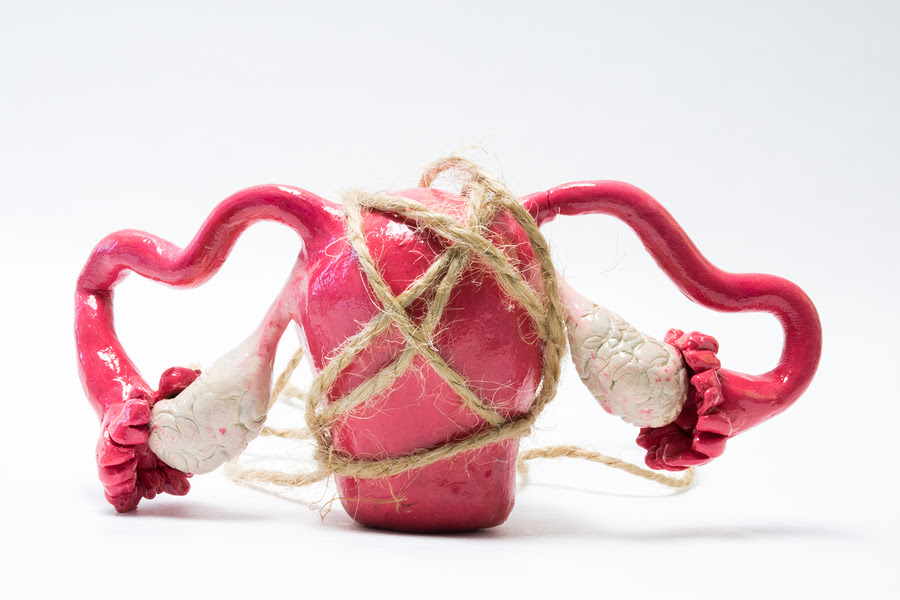Pelvic congestion syndrome (PCS) is quite literally what it sounds like, congestion in the pelvis. It happens when the blood vessels in and around the pelvis become enlarged. This leads to blood and lymph fluid becoming stagnant or congested. Think of a varicose vein in a leg, that loses the ability to move blood back to the heart and pools, often painful; this is similar to what happens with the vessels in the congested pelvis.
Here’s a quick circulation lesson. Arteries carry blood that contains oxygen away from the heart, to the peripheral tissues. Veins bring deoxygenated blood towards the lungs and heart. This is how breathing in oxygen helps oxygenate your cells. Veins have small valves which help the blood move in one direction towards the heart without backflow. When the vessels become dilated and enlarged, these valves can’t do their job as efficiently. This can lead to pooling of blood, which makes it harder for the system to keep things moving. When fluids aren’t moving as well as they normally do, edema and other health issues can arise.
Pelvic congestion syndrome happens most commonly in women of childbearing age who have had more than one pregnancy. This condition is caused by varicose veins in the pelvic bowl, causing pain in the uterus, ovaries, and vulva. PCS can be an underlying cause of chronic pelvic pain, particularly if that pain is worse with sitting or standing, but better with lying down.
Chronic pelvic pain, caused by pelvic congestion is responsible for other symptoms of dull, aching or “dragging” pain in the hips, lower back, and legs, especially around menses. It can also impact bladder function, bowels, and contribute to abnormal vaginal bleeding.
When we work with women with chronic pain, one strategy we will use is to ask them to lean into it. I know that sounds awful, but hear me out. Often, when the body is in acute pain, we naturally guard and protect that area. For instance, when a woman is experiencing pelvic pain the supporting muscles of the pelvic bowl will tighten to adjust and protect the injured area or sore muscle. Have you ever noticed when thinking about something painful, you can feel your gluteus muscles tense up as a visceral reaction? This tightness creates that block, preventing fluid movement out of the area, leading to a backup of inflammation and congestion.
With chronic pelvic pain, the goal is to support fluid movement, encouraging the release of the muscle tension, and inflammation from congesting in the pelvic bowl.
Tips to Encourage Circulation:
- Deep breathing into your pelvic bowl: While taking deep breaths, visualize your pelvis allowing the circulation to flow through. This practice can significantly help to release stuck fluid.
- Hydrotherapy is the use of alternating hot and cold water to dilate and constrict the blood vessels. The pumping action that is created will move the congested pelvic fluid out of the pelvic bowl back into circulation. You can start in the shower with 3 minutes of warm water followed by 30 seconds of cool water focused on your abdomen and pelvic regions.
Another important component of working with pelvic congestion and chronic pain is to address our mental and emotional bodies. If we are guarding ourselves from experiencing pain or shutting down and closing off after we have experienced pain, then we are using a considerable amount of energy to block our feelings. When this happens, you will end up feeling exhausted and depleted. However, if you can recognize the feeling and allow it to be there, acknowledging and investigating the source, witnessing your experience and nurturing yourself during that time, you will be able to move through the mental and emotional congestion without getting stuck in it.
When working with women during Holistic Pelvic Care™, or pelvic floor therapy sessions, emotional connections are bound to come up. The pelvic bowl is a vulnerable area of the female body that holds stress, emotions, tension, and trauma patterns. It is no wonder that so many women suffer with pelvic congestion syndrome. When we are able to work together, we will support you in the release of your chronic pelvic pain and help you move into reclaiming your healthy, happy, and pain-free life.
For more information about the types of pelvic floor therapy offered at Amber Wellness Group, visit our website or call us today.



